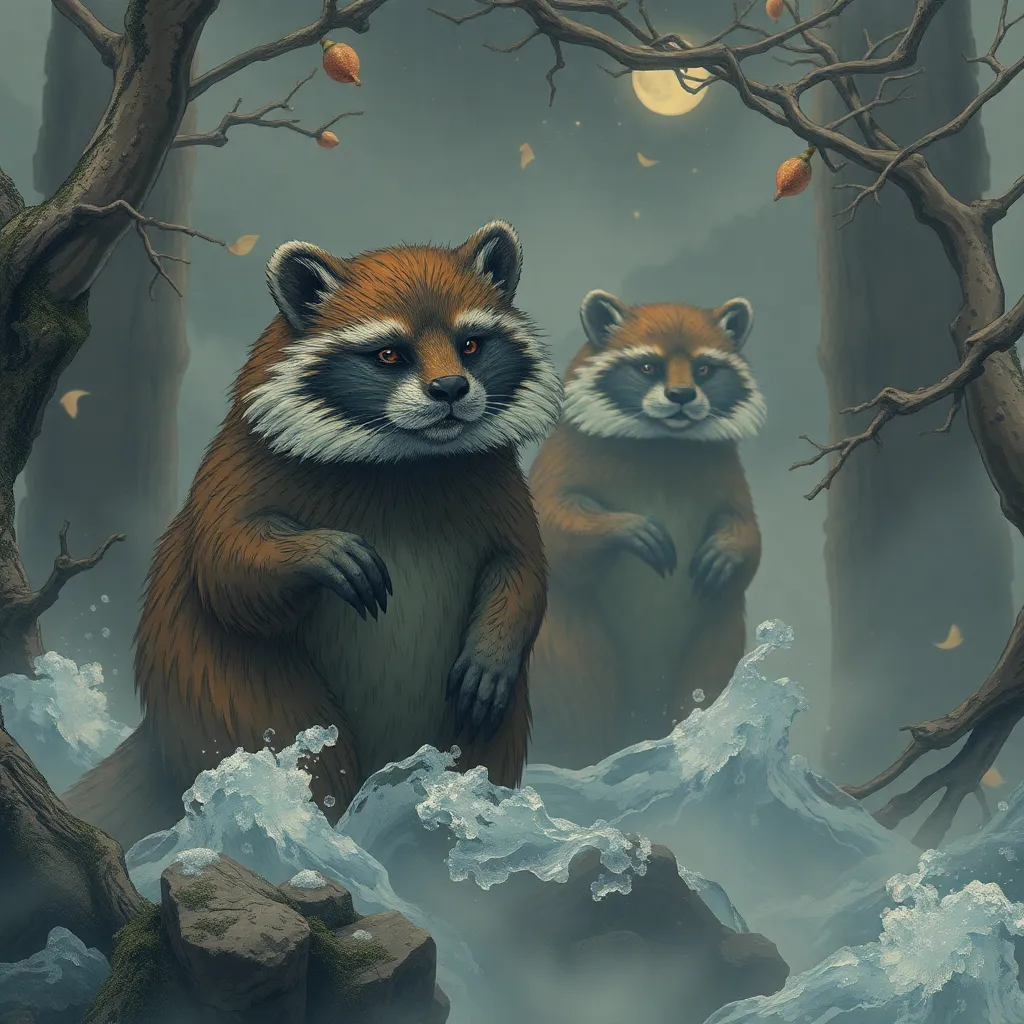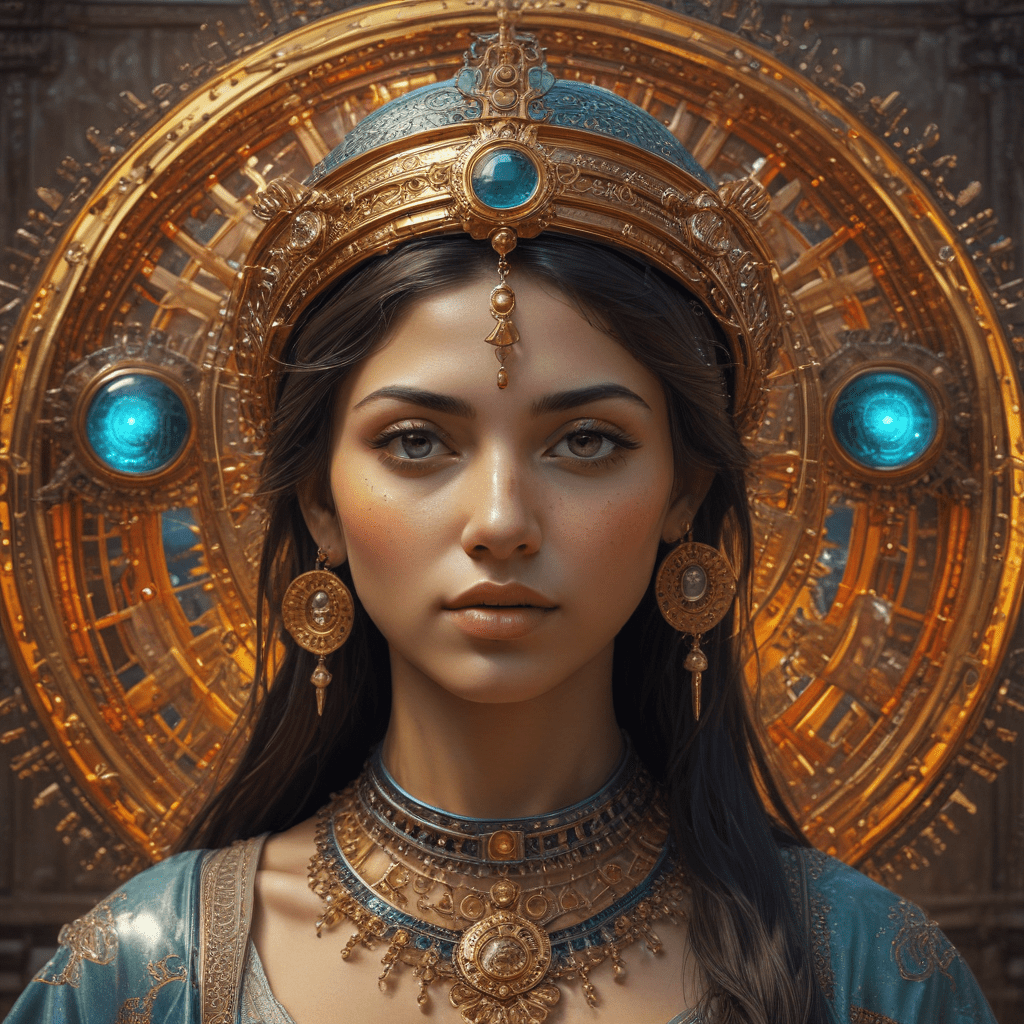Tanuki in East Asian Mythology: Exploring Similarities and Differences
I. Introduction
In Japanese culture, the tanuki is a fascinating creature that embodies various traits and characteristics. Often depicted as a shape-shifting animal resembling a raccoon, the tanuki plays a crucial role in Japanese folklore, symbolizing prosperity and mirth. Its playful nature and transformative abilities make it a beloved figure in stories and art.
The concept of tanuki is not isolated to Japan; it resonates through the broader tapestry of East Asian mythology, encompassing similar creatures and themes in Chinese and Korean cultures. This article aims to explore the similarities and differences of tanuki across these cultures, highlighting how each has shaped and reinterpreted this mythical figure.
II. The Origin of Tanuki in Japanese Folklore
A. Historical Background of Tanuki in Japan
The tanuki has deep roots in Japanese folklore, with origins tracing back to ancient times. Initially, these creatures were viewed as real animals, but they soon became imbued with magical qualities through storytelling and local beliefs. In the Edo period, tanuki began to appear more prominently in literature and art, often depicted as mischievous tricksters.
B. Key Characteristics and Symbolism of Tanuki
Tanuki are characterized by their shape-shifting abilities, often transforming into humans or other objects. They are traditionally associated with:
- Trickery and cunning
- Prosperity and good fortune
- Nature and the wild
In many tales, tanuki use their powers for humorous or benevolent purposes, which enhances their appeal as folk heroes.
C. Tanuki in Japanese Literature and Art
Tanuki figures prominently in various forms of Japanese art, from woodblock prints to modern anime. Notable examples include:
- Bakemono no ehon (Books of Transformations)
- Pom Poko (Animated film by Studio Ghibli)
- Traditional festivals celebrating tanuki
These artistic representations highlight the tanuki’s multifaceted nature and its significance in Japanese culture.
III. Tanuki in Chinese Mythology
A. The Concept of Shǔ (狐狸) and Its Relation to Tanuki
In Chinese mythology, the concept of the shǔ (狐狸, meaning “fox”) shares similarities with the tanuki. The shǔ is often depicted as a cunning creature with the ability to shape-shift, similar to the tanuki, but is more commonly associated with seduction and trickery in folklore.
B. Characteristics and Symbolism of the Shǔ in Chinese Culture
The shǔ is often seen as a symbol of:
- Feminine mystique
- Deception and cunning
- Transformation and adaptability
While both tanuki and shǔ share the theme of shape-shifting, their cultural connotations differ significantly.
C. Comparison of Tanuki and Shǔ: Similarities and Differences
Key similarities and differences between tanuki and shǔ include:
- Similarities: Both are shape-shifters and possess a trickster nature.
- Differences: Tanuki are often viewed as benevolent, while shǔ may embody more malicious traits, particularly in romantic contexts.
IV. The Korean Equivalent: The Dokkebi
A. Introduction to Dokkebi in Korean Folklore
The dokkebi is a creature in Korean folklore that shares some traits with the tanuki and shǔ. Often depicted as goblin-like beings, dokkebi are known for their mischievous behavior and magical abilities.
B. Characteristics and Cultural Significance of Dokkebi
Dokkebi are characterized by:
- Trickster qualities
- A connection to nature and rural life
- Ability to bring both fortune and chaos
They play a vital role in Korean culture, often appearing in stories that underscore moral lessons or community values.
C. Comparing Dokkebi and Tanuki: Shared Traits and Divergences
When comparing dokkebi and tanuki:
- Shared Traits: Both are tricksters and shape-shifters associated with nature.
- Divergences: Dokkebi are often depicted as more fearsome and less benevolent compared to the generally playful tanuki.
V. Common Themes Across East Asian Cultures
A. Shape-shifting Abilities and Trickster Nature
Shape-shifting is a prevalent theme across the three cultures, with tanuki, shǔ, and dokkebi all embodying the qualities of tricksters who can manipulate their forms. This ability often reflects deeper societal values regarding deception and transformation.
B. The Role of Nature Spirits in Folklore
Each of these creatures is also tied to the natural world, representing the spirits of the land and embodying the balance between humanity and nature. They serve as reminders of the mystical elements present in everyday life.
C. Symbolism of Prosperity and Fertility
Tanuki, shǔ, and dokkebi all symbolize prosperity and fertility in various forms, often appearing in stories that celebrate abundance and good fortune, thus reflecting the hopes and dreams of the communities that revere them.
VI. Regional Variations and Interpretations
A. Local Legends and Stories Featuring Tanuki, Shǔ, and Dokkebi
Each culture boasts unique legends that illustrate the specific traits of these mythical creatures. For example:
- Japanese legends often feature tanuki helping farmers or playing tricks on travelers.
- Chinese tales may portray shǔ as seducers or cunning characters in romantic plots.
- Korean stories about dokkebi highlight their ability to disrupt or assist human activities.
B. Influence of Geography and Societal Norms on Mythology
Geographical and societal influences shape how these creatures are perceived. For instance, rural communities may have stronger ties to tanuki and dokkebi due to their agricultural significance.
C. Modern Adaptations in Popular Culture
In contemporary media, tanuki, shǔ, and dokkebi have evolved into popular characters in films, animations, and video games, often retaining their mythical properties while appealing to modern audiences.
VII. The Impact of Globalization on Tanuki Myths
A. Cross-cultural Exchange and Its Effects on Mythology
Globalization has facilitated cross-cultural exchanges that influence how these myths are perceived and retold. As these stories spread, they adapt to new contexts, merging features from different cultures.
B. Contemporary Representations of Tanuki in Media
Today, tanuki appear in various media forms, including:
- Anime and manga
- Video games featuring folkloric themes
- Merchandise that capitalizes on their whimsical nature
This modern representation often emphasizes their playful and mischievous characteristics.
C. The Evolution of Tanuki Legends in a Global Context
As tanuki legends evolve, they incorporate elements from other cultures, reflecting a dynamic interplay of tradition and modernity. This evolution highlights the adaptability of folklore in response to changing societal values.
VIII. Conclusion
A. Summary of Key Similarities and Differences
Through this exploration of tanuki, shǔ, and dokkebi, we uncover key similarities, such as their shape-shifting abilities and trickster natures, alongside notable differences in their cultural significance and representations.
B. Importance of Understanding Cultural Folklore
Understanding these mythologies fosters appreciation for the rich heritage of East Asian cultures and highlights the universal themes that connect them.
C. Encouragement for




